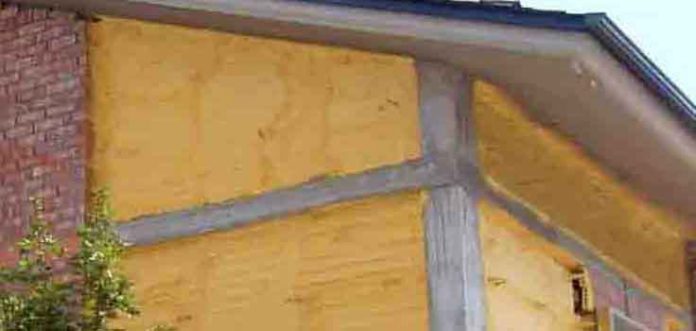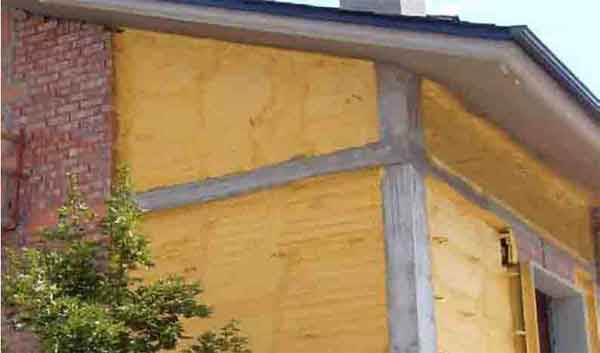
Today we are going to talk about a component widely used in the construction and rehabilitation of real estate. It’s about the Polyurethane foam.
Its widespread use is due to its ease of application, as well as its excellent technical properties, which makes it ideal for many uses.
In addition to its main application in construction and rehabilitation, it is also a product widely used in DIY tasks and minor repairs. For these purposes, small-sized containers are marketed, which are ready to apply as a spray.
As in future tutorials we will use, among other materials, the Polyurethane foam, we want to go ahead and tell you about it. At least, of the most basic aspects of it.
The Polyurethane foam It is a highly cross-linked and non-fusible synthetic and duroplastic material, which is obtained from the mixture of two components generated by chemical processes from oil and sugar: Isocyanate and Polyol.
There are two ways to get it: projecting at the same time the two components on a surface, or by wash (mixture of both materials).

This solid, uniform and resistant structure has a cellular formula suitable for use as an insulator, thanks to the characteristics already mentioned, as well as its rapid application, insulating capacity and its ability to eliminate thermal bridges. The Polyurethane foam also commonly used in waterproofing.
Thermal Properties of Polyurethane Foam
The Polyurethane foam has a high capacity insulating due to the low thermal conductivity of the foaming gas in its closed cells, which can be set at 10 ºC = 0.022 W/m K, according to the StandardUNE 92202, although this value rises slightly over time, until finally stabilizing. After 9 months of aging, the value is considered to be 10 ºC = 0.028 W/m K, according toUNE 92120-1which represents a 25% improvement compared to the average of the other products used in thermal insulation (for example, the mineral woolthe foams of extruded polystyrene Y expanded…).
The Polyurethane foam It is highly resistant to the effects of the passage of time and has a long useful life, remaining without deteriorating for more than 50 years.
The Rigid Polyurethane Foam obtained by projection is the most efficient insulating material, since it requires a minimum thickness to insulate the same as any other material. This also represents an economic benefit since for the same degree of insulation, the Polyurethane Foam needs a smaller thickness, which implies a greater habitable surface.
Water-Related Properties of Polyurethane Foam
The CTE seeks to limit the risk of the inadequate presence of water inside buildings and in their enclosures, and therefore requires certain degrees of impermeability to the facades. As stated by the CTE, intermediate continuous coatings – such as Polyurethane Foam – are one of the best alternatives to meet these waterproof requirements.
Polyurethane Foam is an intermediate continuous coating because it meets the aspects established in the DB-HS1 for these materials related to watertightness, resistance to cracking, adherence, permeability and physical and chemical stability.
With a continuous intermediate coating such as Polyurethane Foam it is not necessary plastered since the material itself satisfies the waterproofing requirements. This circumstance also supposes another economic benefit, both due to savings in mortar for the plastering and for the surface that is gained as it is not necessary. Being classified as intermediate continuous lining also means an absence of pathology in the walls under extreme conditions.
Moisture-Proof Properties of Polyurethane Foam
The values of the Polyurethane foam as far as humidity refers to guarantee, in most cases and depending on the density, the absence of interstitial condensation, making it possible for the enclosure to perspire, which is the most beneficial effect for preventing all kinds of pathologies (hygiene, health, comfort …). And also to maintain the characteristics of the constructive solution for a long time.
So the Polyurethane foamunlike other products used, brings together two very important characteristics for a material used in insulation: it is waterproof and allows the perspirationin any climate and without the need for a vapor barrier.
Fire Properties of Polyurethane Foam
The Polyurethane foam It is an organic material, and therefore combustible, and numerous studies have shown its good behavior against fire in the final use application. In a finished work, the insulating material is not visible, but behind surfaces such as walls, walls, floors and ceilings.
Therefore, the suitability of the use of the Polyurethane foam will largely depend on the values of Fire resistance of the materials that make up said surfaces, in addition to the place where it will be projected.
In addition, there are some varieties of the Polyurethane foam with protection against fire, which are classified from C,s3-d0 until ANDaccording to the Standard UNE-EN 13501.
Environmental Properties of Polyurethane Foam
The use of Polyurethane foam in homes, it contributes to their energy consumption (consumption that produces the greenhouse effect) being much lower.
Thus, considering a life cycle of Polyurethane of 50 years, a very positive balance is obtained on the greenhouse effect when using said product as thermal insulation.
Acoustic Properties of Polyurethane Foam
The easy application of Polyurethane foam It is an advantage in this case, because panel-applied products need a really careful application.
The Polyurethane foam used for the thermal isolation It is a light and low density material, composed of closed cells (>90%). This product, combined with other materials, is very effective in reducing sound transmission and in damping vibrations and eliminating resonances.
Basic Regulations for the Application of Polyurethane Foam
In the application of Polyurethane foam It is essential to determine the necessary thickness for each constructive solution and, for this reason, the person in charge of the work must comply with the requirements established in the following standards:
Rule UNE 92120-2:98: Thermal Insulation Products for Construction. Rigid polyurethane foam produced on site. Part 1: Specifications for polyurethane systems before installation. Part 2: Specifications for the installed product.
Rule UNE 92310:2003: Measurement and Quantification Criteria for Thermal Insulation Works in Industrial Facilities and Buildings. Rigid polyurethane foam produced in situ by projection.
PR 20.06: Specific regulations of the N Mark of AENOR for the Application of Rigid Polyurethane Foam in situ.
Polyurethane Foam Thickness Measurement Process
To measure the thickness, the operator will have a graduated punch or similar tool whose diameter does not exceed 2 mm. During this process, the Standard UNE 92120-2 indicates that ten points must be taken within the surface, five of high thickness and another five apparently of low thickness.
After this process, the result of the calculation of the thickness will be the average of the different measurements, without counting the four extreme values, and none of the measurements considered may be lower than the general average by more than 25%.
This process will be carried out at least every 75 mtwo and, as a minimum, for each work unit and per day. In the case of an intense frequency level, the specific regulations of the N Mark indicate that the measurement must be carried out every 50 mtwo and, at least, one measurement per work unit and per day.
Properties of the Polyurethane Foam Application Process
- professional applicator. Unlike other insulating materials, with the Polyurethane foam a professional applicator is necessary for the projection of the product on the work, which is a guarantee of good installation.
- on-site projection. This process guarantees the speed of execution, the simple solution of thermal bridges and also it is not necessary to have space for the insulation to be stored.
- The only insulating product with the possibility of double certification (certification mark of the products before application and of the product installed).
- Speed in the application. The speed of its application converts the Polyurethane foam in the most applied material per day, in m3
- The Polyurethane foam It does not need prior plastering, as it is a continuous intermediate coating.
Origin: Construmatica
.



